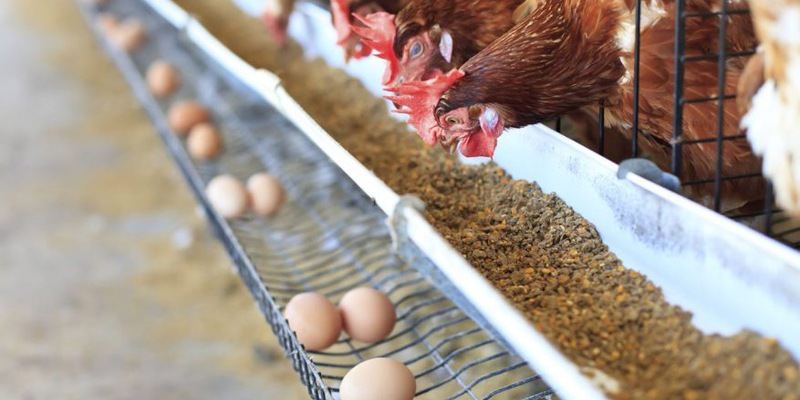
How Much Does It Cost to Start a 20,000 Layer Poultry Farm?
Starting a poultry farm with 20,000 laying hens is a promising business, especially given the increasing demand for eggs in both local and global markets. However, understanding the 20,000 laying hens farm costs is essential for successfully launching and operating your business. In this article, we’ll break down various cost components associated with establishing a layer poultry farm of this scale.
Initial Investment Costs
1. Infrastructure Development
The first significant expense you’ll encounter involves building the necessary infrastructure. This includes:
- Chicken Coops and Cages: Depending on whether you opt for traditional or modern cage systems, investment in housing will vary. For automated systems, expect costs ranging from $250,000 to $600,000.
- Feed Storage Facilities: Proper storage is crucial for maintaining feed quality and preventing waste. Constructing a feed silo can cost around $10,000 to $20,000.
- Water Supply Systems: A reliable water supply is essential. Costs may range from $5,000 to $15,000 depending on the system’s complexity.
Estimated Total for Infrastructure:
Between $265,000 and $635,000.
Operational Costs
2. Livestock Acquisition
Next, consider the 20,000 laying hens breeding costs. The price of chicks varies based on breed and supplier but generally falls between $1.50 and $3.00 per chick. Thus, for 20,000 chicks:
- Cost Range: $30,000 to $60,000.
3. Feed Costs
Feeding accounts for a significant portion of operational expenses. Layers require specialized feed that is high in protein and calcium, especially during peak laying periods.
- Daily Feed Requirement: On average, each hen consumes about 110 grams of feed per day. Therefore, for 20,000 hens, the total daily feed consumption will be approximately 2,200 kg.
- Monthly Feed Costs: Assuming a per-kilogram feed cost of $0.30, monthly feed costs would amount to:
[ 2,200 , \text{kg} \times 30 , \text{days} \times 0.30 = $19,800 ]
Annual Feed Costs:
[ $19,800 \times 12 = $237,600 ]
Additional Operating Expenses
4. Labor Costs
Hiring skilled labor is vital for efficient farm operation. The number of workers needed will depend on the level of automation and management structure. On average, assume:
- Labor Costs: For a moderate setup, expect to pay about $15,000 to $25,000 annually for skilled staff.
5. Veterinary Care and Medications
Health management is critical in poultry farming. Routine vaccinations, health checks, and medications can incur costs along the way.
- Estimated Veterinary Costs: Annually, these costs might be approximately $5,000 to $10,000.
6. Utilities and Maintenance
Electricity, water, and maintenance costs are continuous expenses that should not be overlooked.
- Utilities: Monthly utility bills could total around $500 to $1,500, leading to annual costs between $6,000 and $18,000.
- Maintenance: Regular maintenance of equipment and infrastructure can add another $2,000 to $5,000 per year.
Total Operational Costs Overview
To summarize the key ongoing costs:
| Item | Cost Range |
|---|---|
| Labor | $15,000 – $25,000 |
| Veterinary Care | $5,000 – $10,000 |
| Utilities | $6,000 – $18,000 |
| Maintenance | $2,000 – $5,000 |
| Total Annual Operating Costs | $28,000 – $68,000 |
Summary of Total Costs
1. Initial Setup Costs:
- Infrastructure: $265,000 – $635,000
- Chicks: $30,000 – $60,000
Total Initial Costs: [ $295,000 – $695,000 ]
2. Annual Operating Costs:
- Annual Operating: $28,000 – $68,000
Combining these costs gives you a comprehensive view of starting a poultry farm:
Total First-Year Costs: [ ($295,000 – $695,000) + ($28,000 – $68,000) = $323,000 – $763,000 ]
Financing Options
Starting a 20,000 laying hens farm requires significant capital, which may necessitate exploring financing options. Here are some avenues to consider:
- Bank Loans: Traditional loans can help cover startup capital. Ensure you have a solid business plan to demonstrate your farm’s potential profitability.
- Grants and Subsidies: Look for local or government programs that support agricultural development. Some organizations offer grants or subsidies specifically for poultry farming, which can help reduce initial costs.
- Investors: If you have a strong business proposition, seeking private investors might be an option. They can provide capital in exchange for equity in the business.
Profit Potential
Understanding your costs is only part of the equation; you should also have a strategy for generating revenue. A well-managed layer farm can yield substantial profits:
- Egg Production: On average, each laying hen produces about 250 eggs per year. For 20,000 hens, this translates to around 5 million eggs annually. Selling these eggs at $0.10 to $0.20 each could result in gross revenues of $500,000 to $1,000,000 per year.
- Value-Added Products: Consider diversifying your offerings. Products such as organic eggs or free-range options can command higher prices, enhancing profitability.
- Byproducts: Manure from layers can be sold as organic fertilizer, adding another income stream.
Conclusion
Starting a 20,000 laying hens farm requires substantial financial investment, primarily in infrastructure, livestock acquisition, and ongoing operational expenses. The estimated total first-year costs range from $323,000 to $763,000, while annual operating costs may reach between $28,000 and $68,000.
Understanding the 20,000 laying hens farm costs and carefully planning your budget will set the stage for success. By employing effective risk management strategies and exploring financing options, you can create a sustainable and profitable poultry business.

